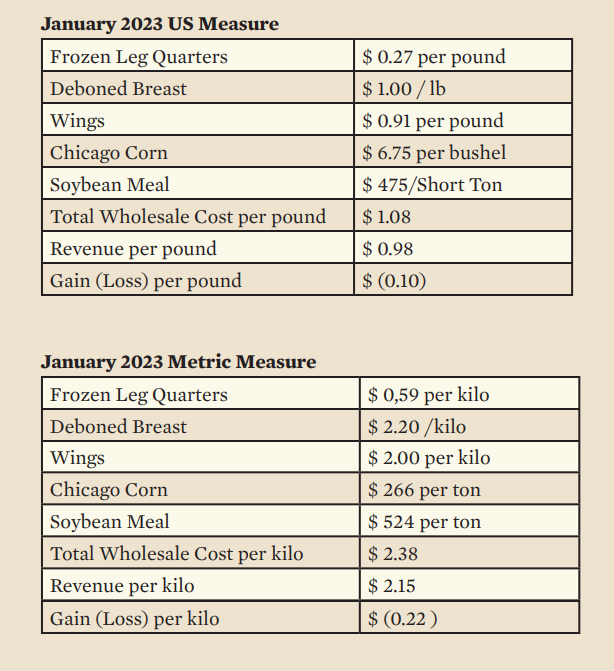



Growth slows and grain prices retreat in 2023
Broiler Economics from Aviagen's Dr. Paul AhoThe world economy grew rapidly in 2021 and 2022 while interest rates were extremely low. Rapid growth resulted in rising inflation and supply chain problems. To make matters worse, a war broke out in a grain basket. The resulting supply shortage resulted in inflation in the price of most goods and services, including grain.
The year 2023 will be different in several ways. First, interest rates are now high not low, the world economy is cooling, and the pace of inflation is slower. Crude oil, for example, started last year at $75 per barrel, rose to $130 and then fell back. In a similar fashion, many commodity prices that were high are returning to lower levels including, importantly for agriculture, fertilizer prices.
Unfortunately, grain prices at the beginning of 2023 are still relatively high. In addition, chicken prices are low so the chicken industry has the worst of both worlds, high grain prices and low chicken prices. There is likely to be improvement in both over the course of the year.
The US Federal Reserve, after waiting perhaps too long to increase interest rates, increased them at an unprecedented rate in 2022. In 2023 the rate increases will slow down and then stop. The outcome of this credit tightening is likely to be slower growth accompanied by a reduction in inflation.
Whether it be crude or corn, bull markets do not last forever because high prices stimulate additional production and discourage use. That potent combination eventually brings a bull market to its knees. Despite the current drought in Argentina, grain markets are likely to begin a bear market sometime in 2023 due to falling demand and adequate supply.
The world economy is slowing down. In 2021, world growth was a blistering 5.7%. The World Bank projects growth of only 1.7% in 2023.
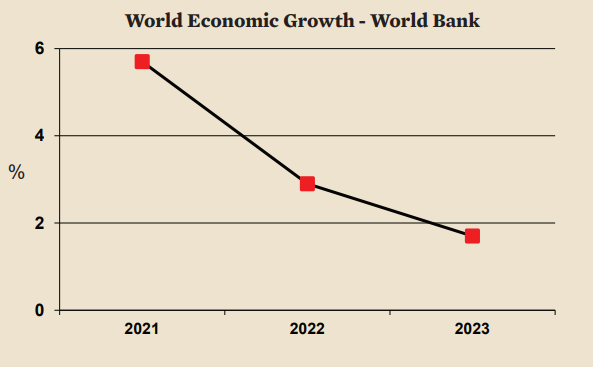
Corn
World corn production is expected to fall somewhat this crop year (crop years run from September to August) due to decreases in the US, Ukraine and Argentina. Overall, world production will be lower. That would normally point to higher prices. However, projections of ending corn inventory numbers for next year are down only slightly which indicates that demand is projected to be falling along with supply. Since corn prices are already relatively high, this situation of falling supply and demand could result in prices that at least stop rising. The recent news of a worsening drought in Argentina will delay, but not end, prospects for falling prices next crop year. If the prospects for the 2023-2024 harvest are good, a likely if not certain scenario, a bear market will develop.
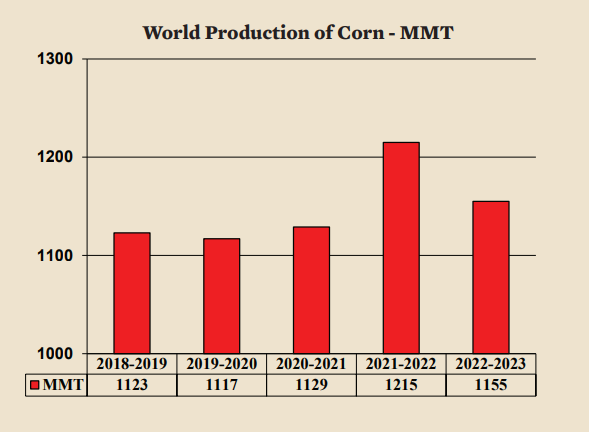
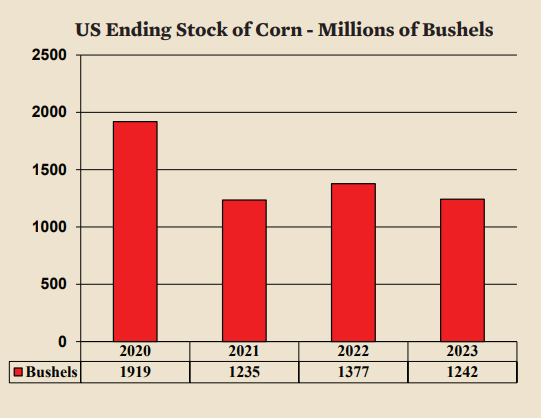
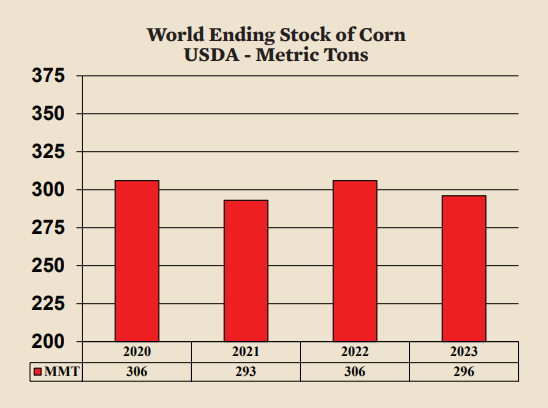
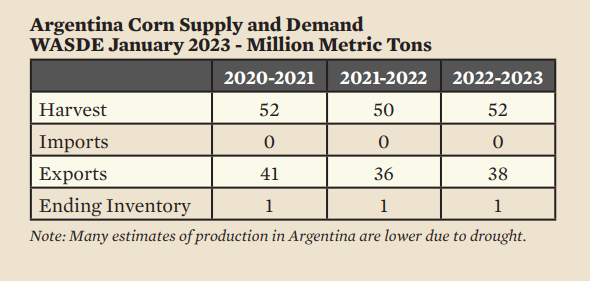
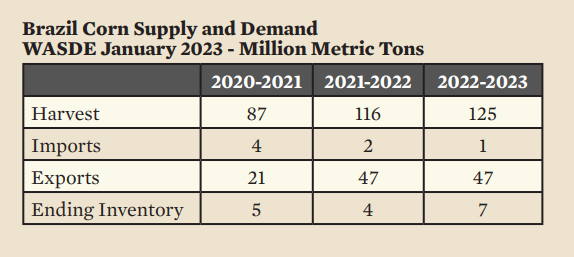
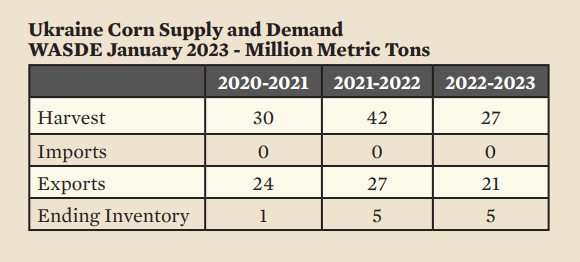
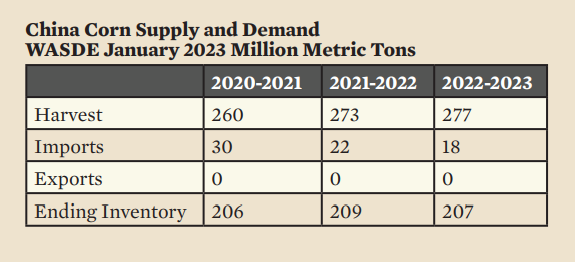
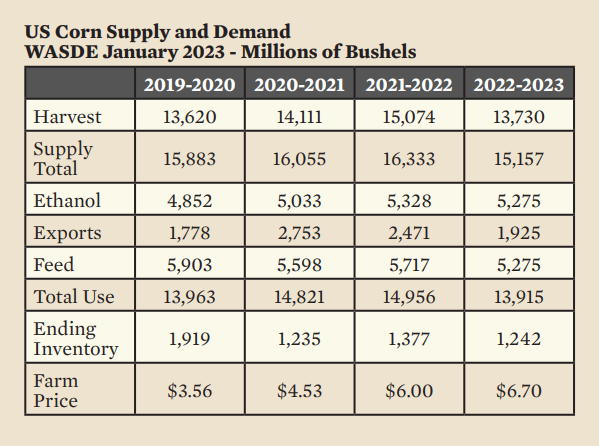
The average price of corn this crop year in the US is projected to be higher than last crop year. Prices have remained high due in part to uncertain prospects for the harvest in Argentina and, of course, the Ukraine. After this crop year, a bear market, and lower average prices in crop year 2023-2024 can be expected to follow this long bull market. A regression to the mean is inevitable particularly considering the expected development of “El Niño” conditions in the Pacific Ocean which generally affect crops favorably.
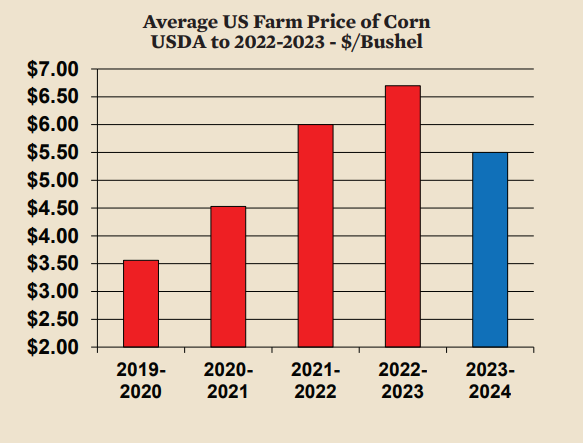
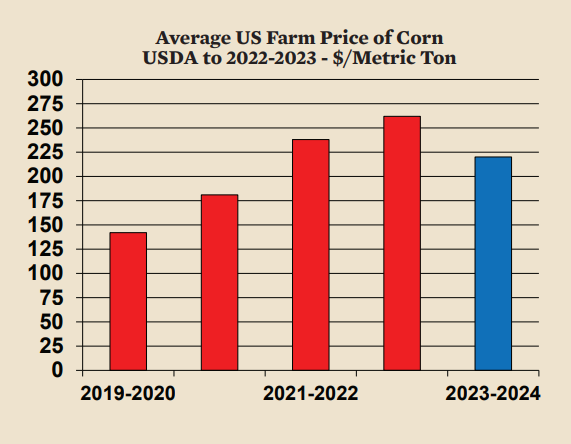
Soybeans
Soybean meal prices were, and are, less affected by the war and more affected by drought and floods in Argentina and Brazil last crop year and a continuing drought in Argentina this crop year. Production in South America dropped by 17 MMT last crop year but is projected to bounce back 30 MMT this crop year although lower production in Argentina might reduce that increase somewhat. The enormous capacity for Brazil to increase soybean production not only negates the effect of a serious drought in Argentina this year but also puts a long-term cap on future prices.
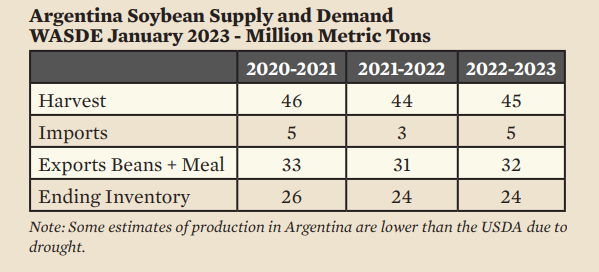
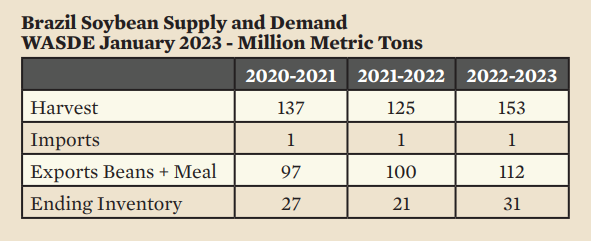
US ending stock is expected to fall this crop year. World ending stocks could fall as well depending on how much damage was done to the crops in Argentina (if the drought in Argentina turns out to be serious). Soybean meal prices in this crop year may be higher than last crop year. However, in crop year 2023-2024 a bear market with lower prices is a reasonable expectation given increased production in both Brazil and Argentina.
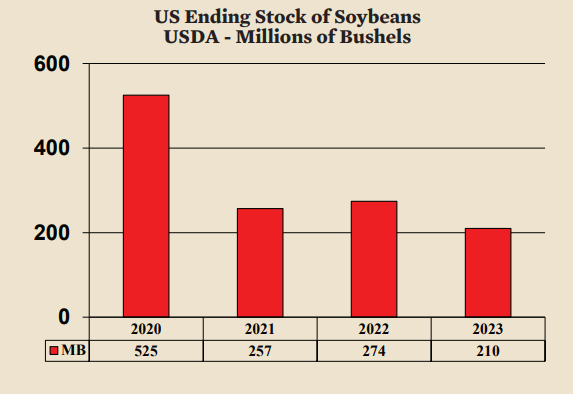
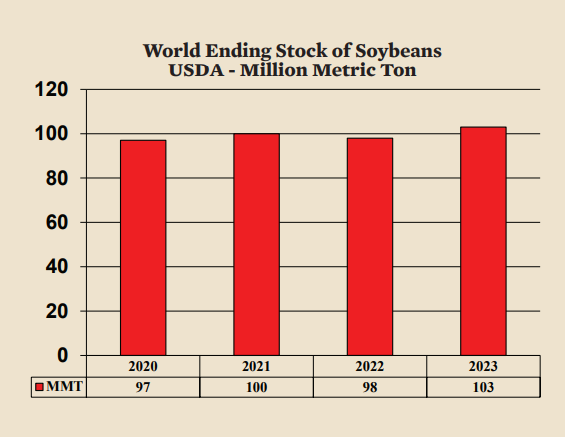
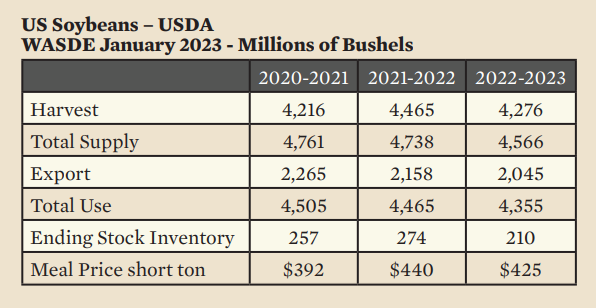
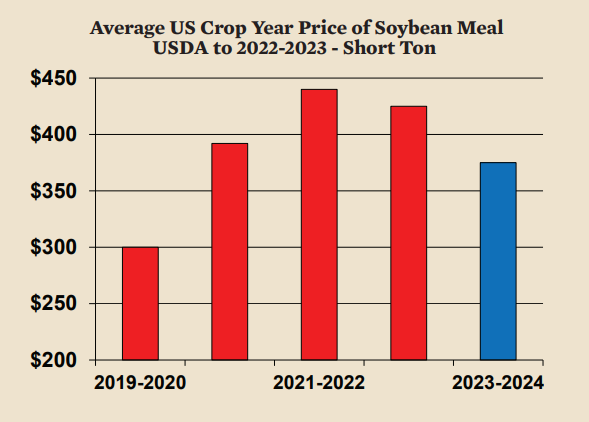
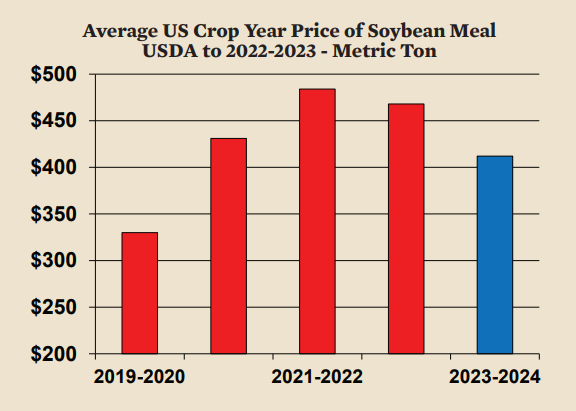
Chicken Industry
The world chicken industry expanded just 0.6% last year but is expected to accelerate to 1.8% in 2023. Production is projected to accelerate despite a looming recession and relatively high grain prices. Part of the ability of the world chicken industry to expand despite high cost is the even higher cost of producing competing meats.
In the US, the opposite is happening. Production rose 3% last year but will rise only 1.4% this year. Production accelerated in the last half of the 2022 leading to a decline in wholesale prices. The increase over year earlier numbers between August and November of 2022 reached 5.8%, an unusually high number. Given the impact that increase had on wholesale prices, it can be expected that production increases will moderate in 2023.
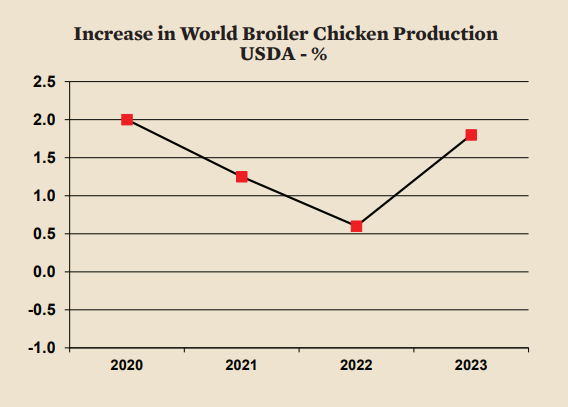
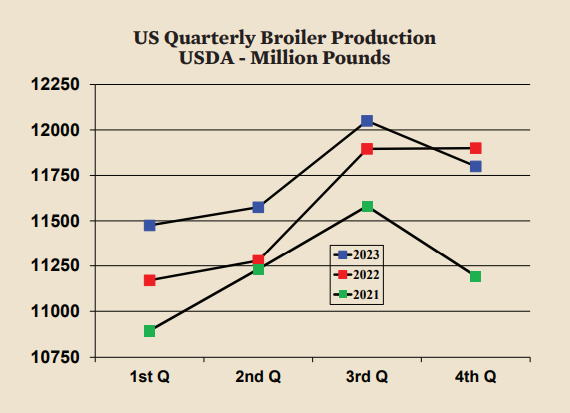
Between 2019 and 2023 poultry per capita consumption in the US increased while red meat per capita consumption declined. This year red meat per capita consumption is expected to fall by two pounds (one kilo) while poultry consumption rises by two pounds (one kilo). The relative scarcity of red meat this year and the resulting higher prices might help poultry prices recover from their current low levels.
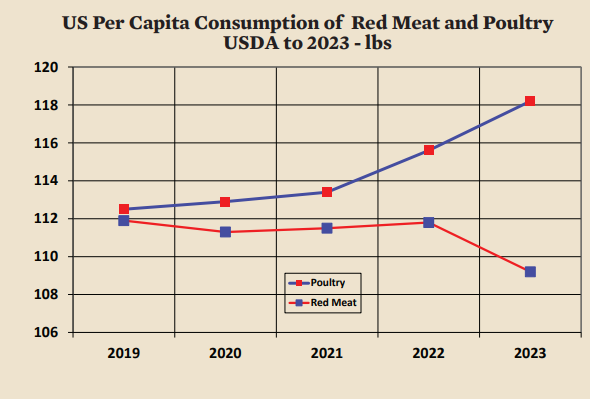
Deboned Breast
Deboned breast meat prices fell sharply in the last half of lastyear. Prices are now around $1.10 per pound ($2.20 per kilo) down from $3.50 per pound ($7.70 per kilo) nine months ago. Prices dropped as more supply became available (in particular, more deboning). In 2023, prices can be expected to rise seasonally but average less than in 2022.
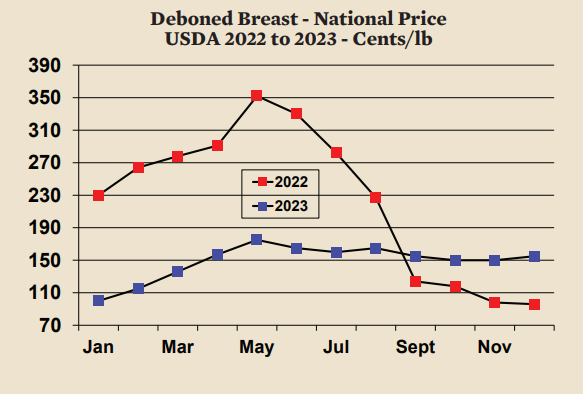
Frozen Leg Quarters for Export
Leg quarter prices were also higher last year and then fell back significantly. From 40 cents per pound in July ($0.88 per kilo) the price fell back to 30 cents recently (66 cents per kilo). The higher production of leg quarters as more chickens were deboned for breast meat helped to increase the supply faster than the increase in demand. A seasonal increase in price can be expected this year. Overall, the average price in 2023 may be similar to that of 2022.
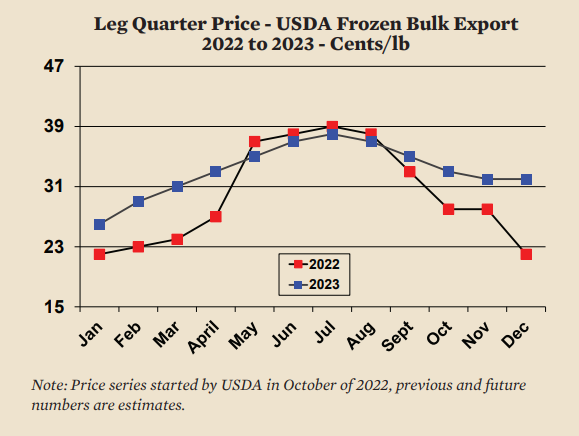
Wings
The falling price of wings last year was a harbinger of declines in the other chicken parts that came later. The wholesale price is now less than 40% of what it was earlier last year. At this point, the price of wings is likely to increase during the late winter and spring.
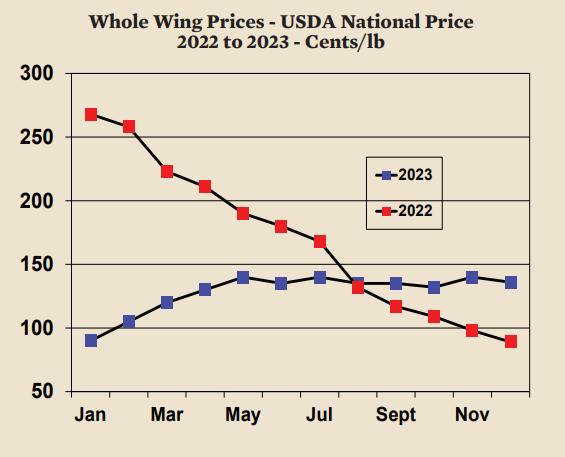
Chicken production in the US is now unprofitable thanks to continued high feed cost and low product prices. The industry may return to profitability soon if grain prices begin to fall as expected and as chicken prices rise seasonally.
